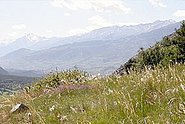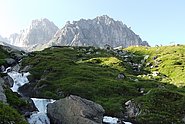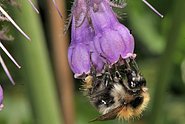
Spatial evolutionary ecology ¶
Head: Prof. Catherine Graham
Contents ¶

We evaluate the ecological and macro-evolutionary mechanisms, acting across different spatial scales, that influence biological diversity. Our research spans community level questions focused on the local maintenance of diversity to biogeographic research evaluating the origin and movement of species across broad biogeographic regions. Our research requires integration from a range of fields, including: ecology, evolutionary biology, biogeography, climatology and geology because mechanisms that influence biological diversity are played out across spatial and temporal scales. We use a range of statistical and modeling approaches to combine the diverse data types in a spatial context. One current focus of the group is on the role of plant-hummingbird interactions in the generation and maintenance high tropical diversity where we work across elevational gradients and distinct biogeographic regions in Central and South America. More generally, we ask why montane regions have such high biological diversity and currently are exploring this question with plants in the Alps. Finally, we use global data on tetrapods to evaluate mechanisms influencing very broad scale patterns of diversity.
Our findings provide the basis for sound species conservation and land management because we study the mechanisms responsible for the maintenance of diversity in both relative pristine and human modified landscapes. In our broad-scale analyses we identify areas of high diversity, in terms of evolutionary heritage, functional traits and interactions, and explore how variation in diversity arose. We combine this with maps representing anthropogenic pressures, such as human land-use, road-density and night-lights, to explore potential threats to diversity.
Projects ¶
Staff ¶
Spatial Evolutionary Ecology
Group leader |
|
Technical staff member |
|
Postdoc |
|
Postdoc |
|
PhD student |
|
Guest |
|
Master student |
|
Scientific staff member |
|
Scientific staff member |
|
Scientific staff member |
|
PhD student guest |
|
Postdoc |




